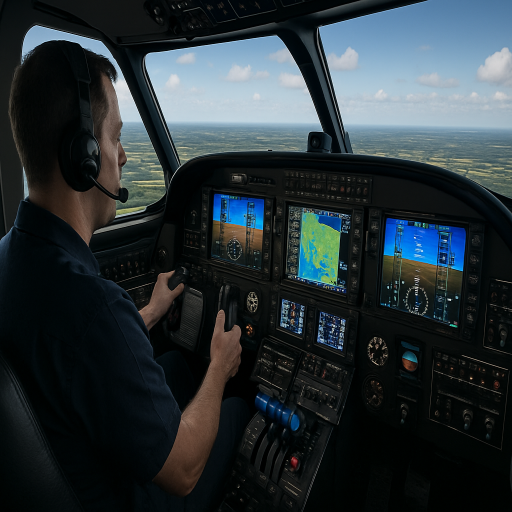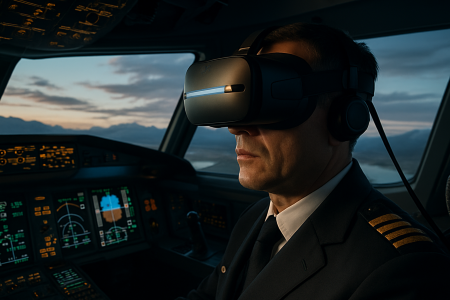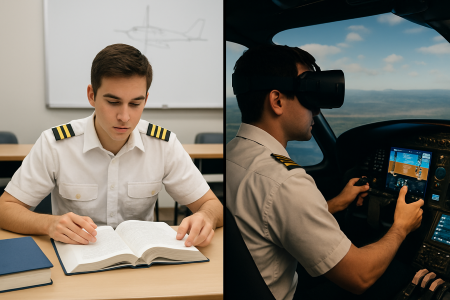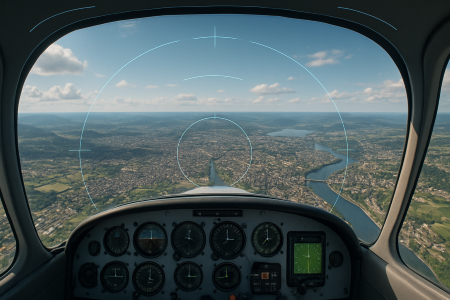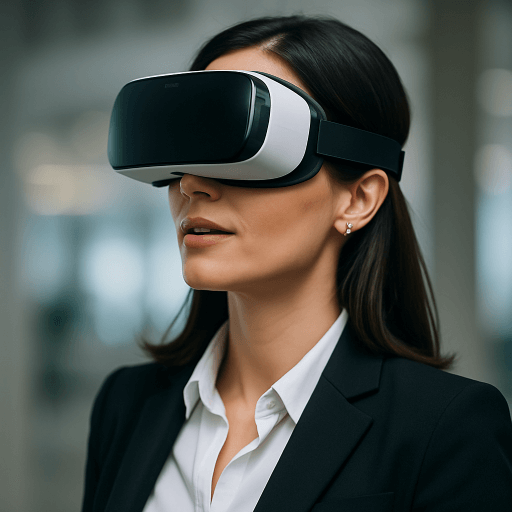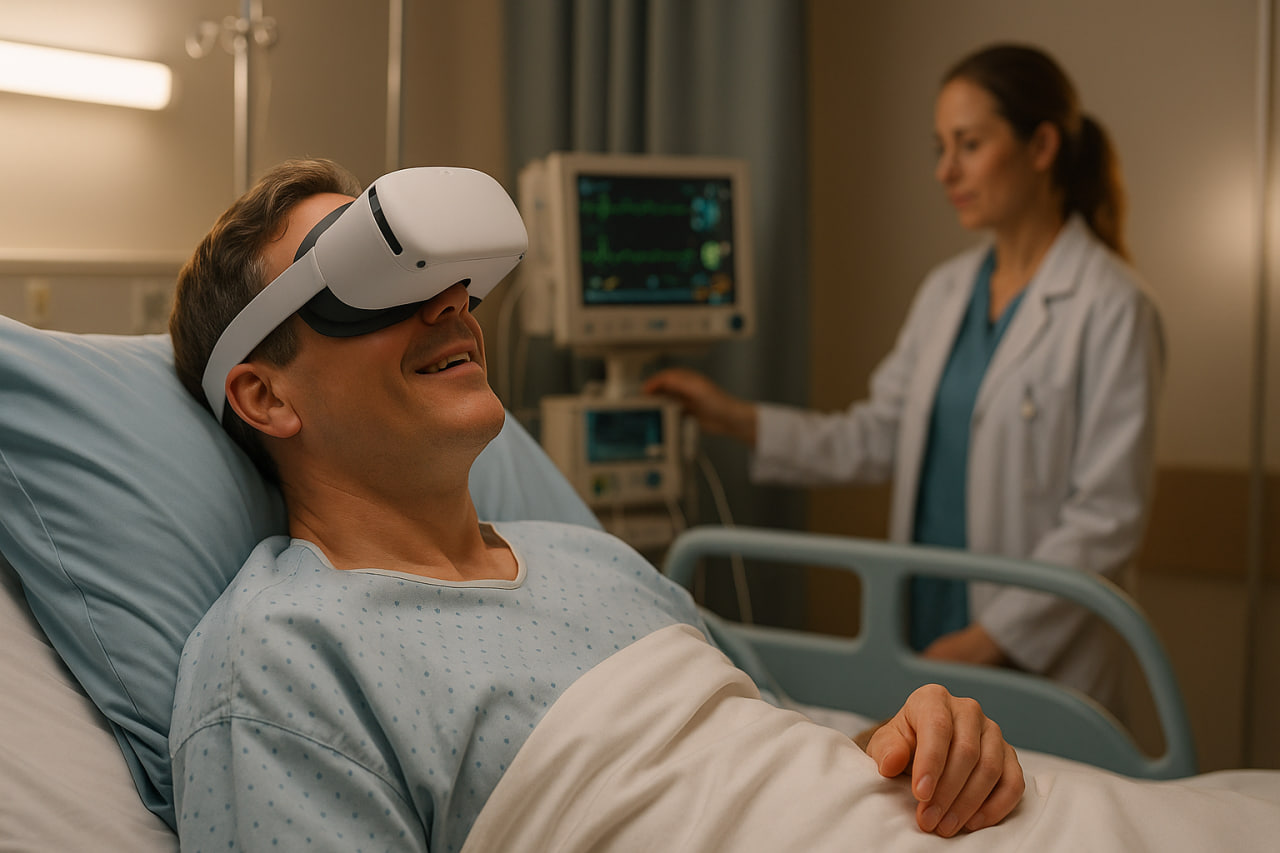What if a single mistake could end your dream of becoming a pilot forever? How can new pilots gain real experience when traditional training programs are so limited?
In this article, I’ll explore these challenges and explain how VR can provide the solution, uncovering the future of Virtual Reality and showing just how much it can transform the way we learn.
VR for pilot training
Cesar Rodriguez, known as the Last American Ace, applied for a pilot training course in 1978. Flying didn’t come naturally to him, and at one point he came close to being dropped. That scare pushed him to work harder, he asked his instructor to be tougher on him and logged extra hours practicing.
His story highlights one key point: Talent alone isn’t everything. Rodrigues wasn’t a “golden boy” for whom flying came effortlessly. Through extra effort and practice, he not only caught up but eventually exceeded the naturally talented trainees. Those who have ever attended pilot training programs know exactly how unforgiving these programs can be. There’s no room for kidding around. Opportunities are limited, and trainees can be dropped at any point.
The problem with many current programs and academies is that they limit practice hours and simulator access, so trainees don’t get the chance to put in the extra time that could make all the difference.
The problem is that some trainees who could become great pilots just need more practice to prove their potential, but the limitations of current training programs don’t allow it.
What would have happened if fate hadn’t favored him? He might never have become the Last American Ace!
VR training eliminates this exact threat: the risk of being dropped before trainees have had the full opportunity to grow and demonstrate their potential. It’s the same kind of pressure Rodrigues once faced, along with countless others who may have been forced out simply because they didn’t get enough practice time.
Of course, instructors and academies can’t be blamed. They often lack enough simulators and have too many trainees to handle. That’s why investing in technology to train more efficiently is so important. It’s also a huge benefit for academies and air forces, as it produces more skilled pilots ready for the real world.
The future of Virtual reality isn’t just about gaming; in pilot training, it’s already making a huge difference. That’s exactly why the U.S. Air Force has been taking VR seriously since 2018, training pilots first through VR.
Their goal isn’t just to increase the number of pilots each year; they also want to make training more efficient and reduce the total hours each trainee needs practicing. How do they achieve this? By teaching trainees in VR first, the time required for actual flight training can be significantly reduced.
At VRLex, we design apps specifically for this purpose, helping academies speed up their training process while giving aspiring pilots the chance to grow without falling victim to limited or inefficient technology.
Cutting training costs with VR
Flight simulators are extremely expensive, and they put a huge financial burden on air forces around the world as well as pilot training schools. That money could be used elsewhere in the military. This is why the U.S. Air Force has already started using VR to train pilots. The difference in cost is massive. Training that used to require millions of dollars can now be done for just thousands, even as low as a few thousand dollars.
The big question is, if the cost drops that much, is it still effective? If it weren’t, it would actually cost more in the long run. But the answer is yes, it works. The U.S. Air Force launched its VR program some years ago, and it cut pilot training from one year down to just four months
And that is truly astonishing.
Skill retention and safety, can VR improve them?
Aviation is one of those fields, like medicine, that requires practical knowledge. It’s not like poetry, where you just read, write, or memorize a beautiful line. Pilots need to learn a lot of complex information in a way that allows them to not only retain it but also apply it immediately when they’re in the plane.
Not understanding this information inside out can be extremely dangerous. Take commercial planes, for example — even if their main function is to carry goods instead of passengers, the plane, the cargo, and the pilot’s life are still at stake. Companies understand this very well and have found a solution. Not only are they very strict in pilot selection, but after this stage, they also run their own training courses. The interesting part is that these companies give exams periodically to make sure pilots don’t forget their knowledge.
Pilots understand this better than anyone: not all information is used on every flight. Some of it is meant for specific situations or emergencies, and they must be able to recall it instantly. The problem is that there’s so much information, and our minds have limits; we can’t remember everything. So, what is the best way to learn quickly and effectively? The best way is by doing. That’s why they say, “Use it or lose it.”
At VRLex, we design VR apps to solve the problem of retention. Training in VR allows pilots to learn by doing, which leads to much higher retention compared to traditional methods like memorization or textbook learning.
What about those rare, catastrophic scenarios that pilots usually learn from books—information they must absorb but cannot practice like maneuvers in simulators or actual flights? By creating every possible scenario, even those with very low occurrence probability but catastrophic consequences, we help pilot schools, academies, and companies train their pilots more effectively and prepare them for these situations through a Custom VR Development Service.
Could VR open up more job opportunities for pilots?
In every field, when new graduates enter the job market, they face one big problem: they have no experience. Companies, big and small, always look for experienced workers to reduce the risks that come with hiring amateurs. But what these new graduates say is worth thinking about: they argue that they’ve got to start somewhere, right? How can they gain experience if everyone rejects them for not having it?
In aviation, though, it’s different. Because lives are at stake, we can’t really blame airlines for having strict rules. Most airlines or commercial companies prefer experienced pilots, which means fewer job opportunities for newly trained ones.
The problem new pilots face is that flying isn’t like driving a car. Cars are everywhere, and even if someone doesn’t own one, they can borrow from family or friends, or simply get more practice hours at driving schools by paying extra. With planes, it’s different.
But what if the training process was designed in a way that allowed pilots to gain real experience as they learned?
Some flight instructors don’t like VR for pilot training because they believe it can’t replace the effectiveness of million-dollar flight simulators. But think about how humans have always reacted to new inventions. Even today, people are still debating how AI might ruin our lives, while ignoring the fact that it’s already saving lives in medicine by performing highly accurate surgeries.
Anyway, the big question here is this: how can VR actually give pilots real experience?
A well-designed VR app, like what we do here at VRLex, gives pilots as much practice as they need. That’s not possible with multi-million-dollar simulators, where training time is limited and shared among many trainees. VR, on the other hand, is affordable and offers limitless opportunities for practice.
All of this builds muscle memory. Think about driving a car: the more you drive, the more your hands and feet just know what to do, getting better and faster each time. The same applies to pilot training. The more you put on the headset, use the controls, and start flying, the more awareness you develop of what comes next, and what comes after that.
The next big question is, why are airlines and commercial companies so obsessed with experience? Because an experienced pilot knows how to react in turbulent situations. They may have faced that problem before and know how to handle the stress and solve it, rather than panicking.
Fortunately, you don’t need to live through every single horrible situation to gain experience. VR solves this problem. Pilot trainees can go through countless scenarios in VR and already know how to respond. It’s not like a textbook where you just memorize steps. VR experiences feel close to reality, and that is why the U.S. Army is already using VR headsets for training.
Going through these possible scenarios in an immersive way is completely different from just reading about them. So after all that precise practice, when you graduate and get certified from flight school, you are not empty-handed. You already have VR experience to back you up.
Happy reading! If you have any questions about how VR is used to train pilots, just drop me a message on WhatsApp and I’ll guide you further.
Can VR train pilots more effectively and faster?
Yes. By training first in VR, pilots can reduce the hours needed in real simulators and actual flights. This is crucial because traditional training is limited, and those restrictions often prevent trainees from getting enough practice, increasing the risk of being dropped before reaching their full potential.
Can VR help train more pilots?
Yes, because solving the limitations with simulators means academies can train more pilots. This has been the goal of the U.S. Air Force, and it has indeed shown good results.
Can VR help pilots retain knowledge?
Yes. Research has shown that we learn much better by doing, and we’re more likely to remember what we practice over long periods compared to just reading and trying to recall information. VR allows pilots to learn by doing rather than merely memorizing.
Can VR drastically cut pilot training time?
Absolutely. The U.S. Air Force’s program has already proven it works.
